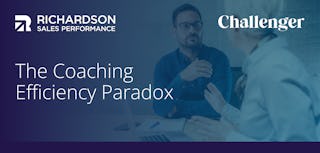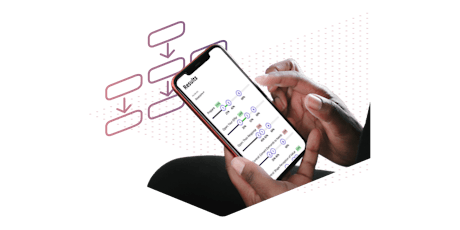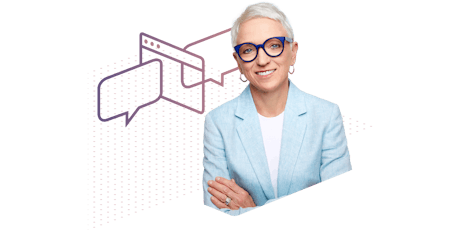How to Use Solution Selling to Adapt to Changes in Buyer Psychology

What is Solution Selling
Solution Selling is a sales process. It is also a collection of selling methods and tools with a philosophy designed to equip the sales professional to align their selling activities with the buyer’s needs.
Solution Selling offers a repeatable framework that builds from a foundation of situational fluency — the sales professional’s understanding of the customer’s situation and the capabilities needed to address the buyer’s challenges.
With Solution Selling, a sales professional learns how to address every stage of the sales process by qualifying opportunities, collaborating with buyers to co-create business value, reduce perceptions of risk, minimize concessions during negotiations, and close the sale. These skills begin with the sales professional’s ability to accurately isolate and understand the customer’s central pain: their most critical business issue, problem, or potential missed opportunity. Today, those pain points and missed opportunities are more prominent as businesses attempt to navigate the uncertainty of a strained economy. Sales professionals see the toll these circumstances are taking on each buyer’s psychology.
The Customer's Changing Psychology
Previously, customers and sales professionals enjoyed the largest expansion in US history occurring over 129 months with an annual GDP growth rate of 2.3 percent. In this accommodative setting, most buyers had the confidence to embrace a growth mindset and overcome the anxiety of making a purchase. By the close of the second quarter, that mindset changed dramatically. Buyers have become concerned.
Solution Selling embraces this reality by delineating buyer concerns into three phases.
- In the first phase, buyers focus on defining their needs and setting a budget for the solution.
- In the second phase, their concerns turn to evaluating the available alternatives.
- In the third phase, buyers become concerned with the risk and cost of committing to a solution.
This sensitivity is so intense that it has, in part, changed the psychology of selling by forcing the sales professional to engage the customer in a deeper conversation about their concerns at each of these three phases.
Here, we look at these three phases and how to navigate each.
Determining Needs
Helping customers clarify their needs is one of the sales professional’s most valuable selling skills. Doing so, however, is difficult during a time of adversity when everything appears to be an obstacle. Therefore, sales professionals must shape the customer’s psychology by helping them recognize that obstacles can represent opportunities. The ability to turn obstacles into opportunities has been labeled as a person’s “adversity quotient,” or “AQ,” by Dr. Paul G. Stoltz.
Drawing from more than 500 studies conducted around the world, Stoltz concludes that “your AQ is learned.” This finding is important because it illustrates that with effort, any sales professional can develop the skills necessary to help customers overcome adversity. Dr. Stoltz remarks that with a high AQ, a person can prevail in the face of difficulty. Doing so means shifting from “reflexive thinking to ‘active’ thinking about how best to respond.”
Stoltz’s work reveals that formulating this response means asking three kinds of questions.
- Specifying Questions: help crystalize the understanding of the most pertinent challenge.
- Visualizing Questions: encourage one to articulate what a good outcome looks like.
- Collaborating Questions: seek to understand which other people would be most helpful in determining a solution.
Evaluating Alternatives
Helping the customer evaluate alternatives requires the sales professional to get specific about what solutions fit their budget. Doing so is difficult because the customer will have shifting ideas about what constitutes “value.” Moreover, in this time of upheaval, they, like so many others, are forced to exhaustively reexamine their economic situation and the broader economy. This process introduces more complexity into problem solving. New information about unprecedented circumstances increases exponentially with each day. This new reality adds to the customer’s already long list of challenges. In short: ambient noise is getting louder as conflicting information increases.
This phenomenon has been observed across numerous studies like the one published in the Journal of Information Science. In their research, the authors concluded that “decision quality suffers with an increase in either the diversity or repetitiveness of an information cue set.”
Decision making becomes more difficult as the amount of information increases.
This problem has never been more evident than it is today. As businesses and stakeholders attempt to navigate a changed world, they are seeking insights from a growing and discordant body of information. Doing so is like trying to isolate a single voice from a shouting crowd of thousands. As the researchers summarize, “More is not always better in the case of information.” Therefore, the sales professional must simplify the process of evaluating alternatives by helping customers isolate what they believe to be core value drivers.
In this phase, customers are often more focused on satisfying all of their needs without much regard for price. However, the sales professional must remember that in Phase III, price will become a critical factor because the customer’s anxiety escalates as a commitment draws near.
Evaluating Risk
The process of evaluating risk will slow the sales cycle. Customers will consider the possibility that the purchase will fall short of expectations leading to a minimal ROI. Moreover, the customer will begin to consider how implementing a new solution will upend the status quo. Moving beyond the status quo instills anxiety because it sometimes means abandoning an existing solution, which represents sunk costs.
A sunk cost is an expense that has been incurred and cannot be recovered. When someone succumbs to the sunk cost fallacy, they are choosing to continue in the wrong direction in the hope that these costs will eventually yield results. In the end, more resources are directed to the wrong strategies. When a customer allows incurred costs to drive their decision making, they are experiencing the sunk cost fallacy.
This phenomenon is as natural as breathing. It is an inherent part of human psychology and sometimes carries the name “plan continuation bias” because it leads people to commit to an unchanged plan even though the plan is not working or even dangerous. Plan continuation bias was cited as a contributing factor in 42% of aircraft accidents in a study conducted by the Flight Safety Foundation. The sunk cost fallacy is strong enough to keep unsafe cars on the road or a country in war. It is a fallacy that governs much of the modern world. Economist Richard Thaler, who won the Noble Prize in Economics, remarked succinctly in a New York Times interview, “Sunk costs? We pay too much attention to them.”
Much of the customer’s sense of risk is rooted in the past. Sales professionals must help the customer envision what the new solution will look like and why it represents something better than what is familiar and comfortable.
Each of the three phases of the buying process require the sales professional to closely read the buyer’s psychology and respond appropriately. Fear and anxiety loom large as painful economic factors come into focus. Using a solution selling approach to help the customer confront adversity, conflicting information, and sunk costs are all part of the modern sales professional’s approach to the new psychology of the customer’s buying journey.

Solution Selling® Training Program Brochure
Empower your team with the right processes and skills to drive performance at scale.
DownloadGet industry insights and stay up to date, subscribe to our newsletter.
Joining our community gives you access to weekly thought leadership to help guide your planning for a training initiative, inform your sales strategy, and most importantly, improve your team's performance.






